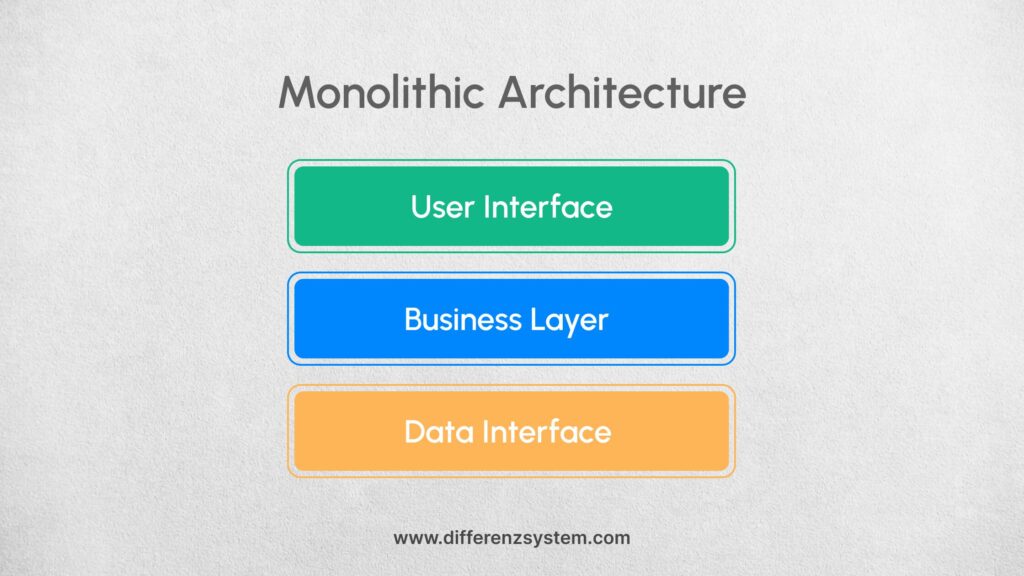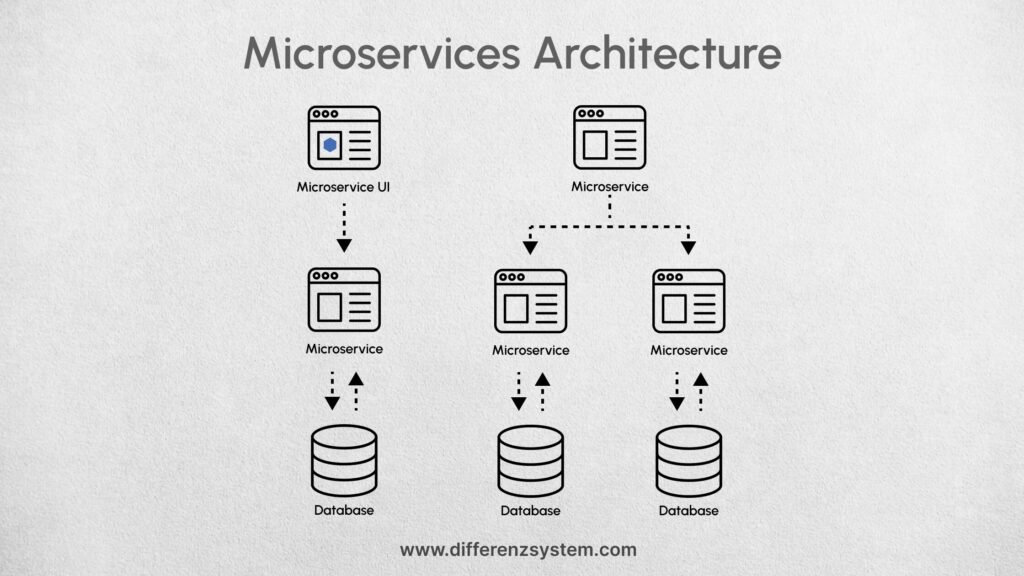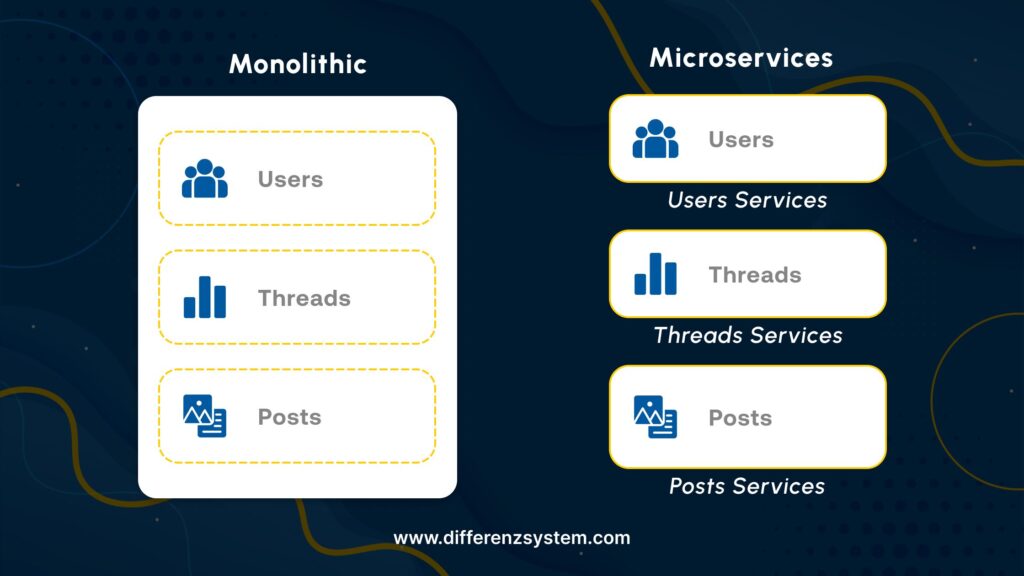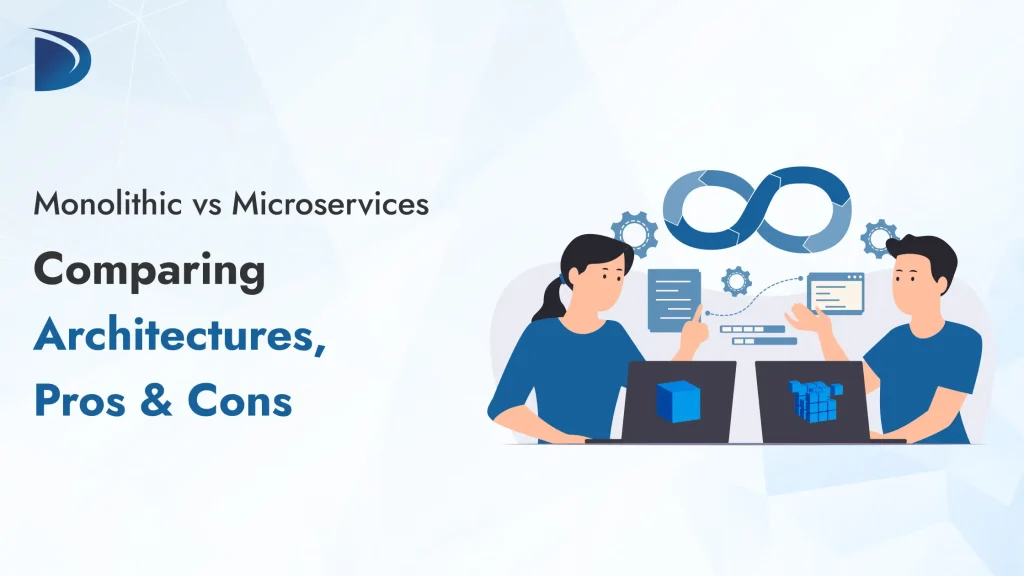Table of Contents
What is Monolithic Architecture?
Monolithic architecture benefits from fast development due to its applications being based on a single code base. You can also say that the entire application is built on a single unified unit.
In this model, all components (user interface, business logic, and data access) are tightly coupled and run as a single service or executable. It’s commonly used in applications where the entire codebase is deployed and scaled together.

Let’s simplify this using real-life examples.
It’s like a giant building where everything you need (kitchen, living room, bedroom) is in one big space. You don’t have separate rooms or floors for different activities; everything is combined into one big area.
Pros of Monolithic Architecture
- Easy debugging: With all code located in one place, it’s easier to follow a request and find an issue.
- Deployment: All web application components (frontend, backend & database) are deployed together.
- Shared resources: This architecture shares resources as they are entangled and combined in a single code base.
Cons of Monolithic Architecture
- Hard to scale: Scaling the entire application to meet higher demand can be inefficient because individual parts of the app cannot be scaled separately. Whenever a single module is updated, the full system is updated to reflect changes to the user. It often requires duplicating applications, leading to inefficiencies and higher costs in the custom software development approach.
- Bug Fixing: Every module is combined into a single system; if an error or bug occurs in a single module, it can potentially compromise the entire system.
- Deployment: A small change to a monolithic application requires the re-deployment of the entire application.
- Slower Development: Maintaining and scaling the application can become challenging as the system grows, leading to slower development cycles. This can limit the flexibility that clients often seek in bespoke software development.
To overcome the disadvantages of monolithic architecture, microservices architecture is a viable option.
What is Microservices Architecture?
Microservices is an architecture style where an application is built as a collection of small, independent services. Custom software development companies often use microservices architecture to build scalable and maintainable systems.
The company can break the application into more minor, independent services, each handling a specific function. Each service can be individually deployed and updated with an independent code base and repository. These services communicate with each other via APIs.

Pros of Microservices Architecture
- Independent services: Each microservice is a separate, standalone component that can be developed, deployed, and scaled independently of the others.
- Single responsibility: Each service focuses on doing one thing well, such as handling payments or managing user profiles.
- Scalability: You can scale individual services based on demand without affecting other services.
- Different technologies: Microservices enable developers to utilize various programming languages, databases, and tools for other services, depending on what best suits their needs.
Cons of Microservices Architecture
- Development: Developing complex services is independent; you must deal with additional tasks, such as managing communication between services, data sharing, and versioning APIs.
- Costly: Running multiple microservices often requires more infrastructure resources, like servers, databases, and network management. Since each service may need to be deployed separately, costs can increase.
- Team coordination: Development and DevOps teams must work closely to ensure that services function well together, which can require more specialized skills and resources.

When Netflix started as a DVD rental service, it had a more straightforward system that was easier to manage due to its monolithic architecture. Everything, from user interfaces to backend services, was tightly coupled and ran as a single application. But later transitioned to a microservices architecture as it grew.
Conclusion
- Monolithic is ideal for smaller projects with lower complexity.
- Microservices are better suited for more extensive evolving applications that require flexibility, scalability, and independent development. However, it comes with operational overhead and requires more advanced development and DevOps practices.
FAQs
Why is choosing between monolithic and microservices architecture important?
The choice impacts development speed, scalability, maintainability, and operational costs. Monoliths are simpler for small projects but can become cumbersome as they grow, while microservices offer flexibility and scalability but require more planning and coordination. The decision affects how teams ship features, scale systems, and align with business goals.
How do I decide which architecture is best for my project?
Consider factors like:
Application Size and Complexity: Monoliths are suitable for small, simple applications, while microservices are better suited for large, complex systems.
Scalability Needs: Microservices allow scaling specific components, while monoliths scale as a whole.
Team Size and Expertise: Monoliths are easier for small teams; microservices require skilled teams for distributed systems.
Time-to-Market: Monoliths enable faster initial development; microservices support faster updates later.
Business Goals: Align the choice with long-term scalability and agility needs.
What is the main difference between monolithic and microservices architecture?
Monolithic: A single, unified codebase where all components (UI, business logic, database access) are tightly coupled and deployed as one unit.
Microservices: A collection of small, independent services, each handling a specific function, communicating via APIs, and deployable separately.
What are the key advantages of monolithic architecture?
Simpler Development: Easier to build and test due to a single codebase, ideal for small teams or projects.
Fast Deployment: Deployed as one unit, reducing coordination needs.
Performance: Local calls within the codebase minimize network latency.
Cost-Effective Initially: Lower upfront costs for small-scale applications.
What are the main disadvantages of monolithic architecture?
Limited Scalability: The entire application must be scaled, even if only one component requires it, resulting in resource waste.
Complex Maintenance: Large codebases become harder to update as they grow.
Technology Lock-In: Difficult to adopt new technologies without significant refactoring.
Single Point of Failure: An error in one part can cause the entire system to crash.
What are the key advantages of microservices architecture?
Scalability: Scale individual services independently to optimize resources.
Flexibility: Utilize various technologies for each service, fostering innovation.
Resilience: Failures are isolated to specific services, not the entire system.
Faster Updates: Independent deployments support frequent, zero-downtime updates.
What are the main disadvantages of microservices architecture?
Increased Complexity: Managing multiple services, APIs, and databases requires more coordination.
Operational Overhead: Each service needs a separate infrastructure and monitoring.
Debugging Challenges: Tracing issues across distributed services is a more complex task.
Higher Initial Costs: Requires more planning, tools, and skilled developers upfront.
When should I choose a monolithic architecture?
Use a monolith for:
Small, simple applications with straightforward requirements.
Startups needing quick market entry or MVPs.
Teams with limited resources or expertise in distributed systems.
Applications with low scalability or update frequency needs.
When is a microservices architecture the better choice?
Choose microservices for:
Large, complex applications require high scalability and frequent updates.
Organizations with skilled, distributed teams familiar with DevOps and APIs.
Systems that need fault isolation or diverse technology stacks.
Businesses are prioritizing long-term agility and innovation.
Can I transition from a monolithic architecture to a microservices-based architecture?
Yes, but it’s complex. Start by modularizing the monolith, extracting services incrementally, and using tools like Docker and Kubernetes for deployment. Plan carefully to avoid disruptions and ensure team expertise in distributed systems.
Are there real-world examples of companies using these architectures?
Monolithic: Shopify and WordPress utilize monolithic architectures for simplicity and manageability in e-commerce and content management.
Microservices: Netflix, Uber, and Spotify use microservices for scalability and rapid feature deployment in large-scale platforms.

